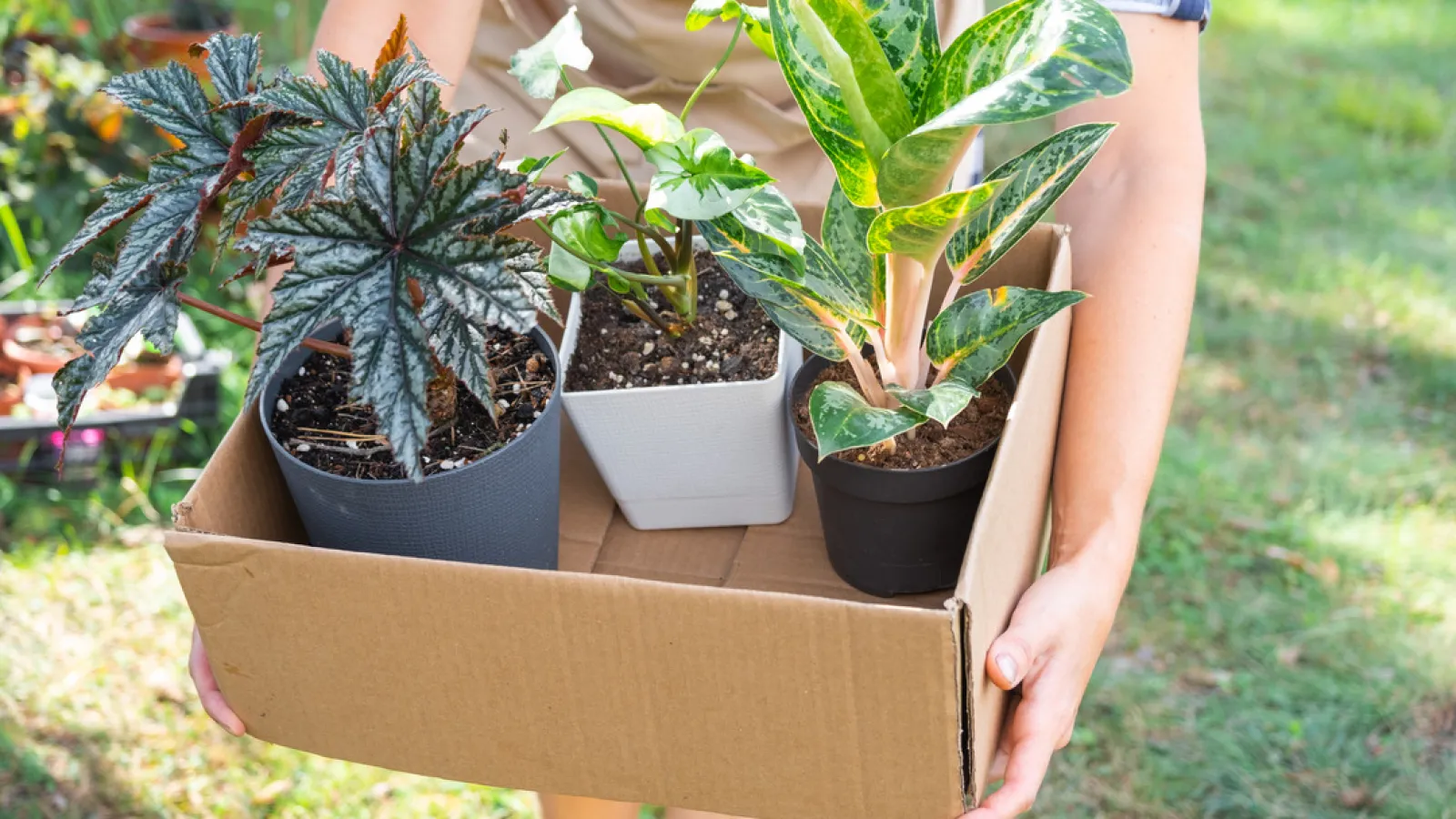
Leaf It to the Experts: Tips for Moving Your Beloved Plants
Whether you have a small collection of succulents or an indoor jungle that's taking over every spare corner, ensuring that your plants survive the move requires careful planning and execution.
A basic overview is to learn how to research your plants' specific needs, trim them, repot them, gather the necessary packing supplies, and care for them after the move. But a more detailed approach will do the trick—here are our five most important tips for moving plants.
Understanding Plant Sensitivity to Moves
Before you start packing, it's crucial to understand which of your plants are most sensitive to changes and moves. Some plants, like ferns and orchids, are particularly delicate and may need extra care during relocation. On the other hand, hardier plants like cacti and succulents can withstand more stress.
High-maintenance plants usually have specific light, water, and temperature requirements. Take time to research each plant's needs. Knowing which plants are more likely to suffer from the move will help you prioritize your efforts and take special precautions.
Here are a few of the most common plants that might have a hard time during a move:
Orchids: Known for their stunning flowers, orchids require specific humidity levels, precise watering schedules, and indirect light to thrive.
Fiddle Leaf Fig: This popular indoor plant needs consistent moisture, humidity, and bright, indirect light, making it sensitive to changes in its environment.
Boston Fern: Preferring a humid environment, Boston ferns demand regular misting and consistent moisture in their soil, which can be tricky during a move.
Calathea: With its vibrant foliage, Calathea is sensitive to both light and temperature. It requires high humidity and should not be exposed to direct sunlight.
Making a Care Plan
Once you've identified the sensitive plants in your collection, create a care plan tailored to their needs. This may include special packing techniques, extra hydration, or even moving them separately to minimize stress (pro tip for moving plants: a short-term storage unit could help with this).
Preparing Your Plants for the Move
Before moving day, it's a good idea to trim and prune your plants. Removing dead or excess foliage not only makes the plants easier to handle but also reduces the risk of damage during transit. Use clean, sharp scissors or pruning shears to make precise cuts.
Repot Your Plants
If your plants are in fragile or very large pots, consider repotting them into more manageable, plastic containers. This will make them easier to transport and less likely to break. Ensure the new pots have adequate drainage to prevent waterlogging during the move.
Hydration Is Key
Water your plants a few days before the move. They should be adequately hydrated but not waterlogged. Overwatering can lead to messy spills and root rot, so aim for a balance.
Essential Packing Supplies
To pack your plants safely, you'll need some essential supplies:
Sturdy boxes
Plastic pots (if repotting)
Bubble wrap or packing paper
Plastic bags
Tapes and markers
Packing Each Plant
One of our best tips for moving plants: line the bottom of each box with a plastic bag to catch any soil that might spill. Place each plant in its pot inside the box, using bubble wrap or packing paper to fill any gaps and prevent movement.
Labeling Boxes
Clearly label each box with "Fragile" and "Live Plants" to ensure they are handled with care. It's also helpful to include arrows indicating which side should face up.
The Moving Process
When loading your plants into the moving vehicle, place them in a stable, upright position. Keep this tip for moving plants in mind—plants should be the last items loaded and the first ones unloaded to minimize their time in the vehicle. It's best to err on the side of caution if you've hired movers and take the plants in your own car to avoid damage in a moving truck.
Temperature Control
Plants can be sensitive to extreme temperatures. If you're moving during hot or cold weather, consider transporting the plants in your car where you can control the temperature, rather than a moving truck.
Avoiding Direct Sunlight
During the move, avoid placing your plants in direct sunlight for extended periods. This can cause them to overheat and wilt, especially if they're enclosed in a box.
Post-Move Care
Once you arrive at your new home, unpack your plants as soon as possible. Check each plant for signs of stress or damage, such as yellowing leaves or wilting.
Gradual Reintroduction
Reintroduce your plants to their new environment gradually. Start by placing them in a similar setting to their previous home, then slowly acclimate them to their new surroundings over a few days.
Monitoring Health
Keep a close eye on your plants for the first few weeks after the move. Monitor their water needs, light exposure, and overall health. Adjust your care routine as necessary to help them settle in.
Make More Room for Your Plants With Midgard
While you're focused on safely moving your plants, Midgard can help with storing your other belongings. We offer secure storage solutions for your boxes and seasonal items, making your move more manageable.
It's important to note that Midgard does not store plants or soil. The controlled environment in storage units isn't suitable for live plants, which require specific conditions to thrive and are a stellar addition to your home decor!
But we can help you make room for your plants by storing your other belongings while you get settled into a new space. Find a unit that works for you and cross that off your moving to-do list!
